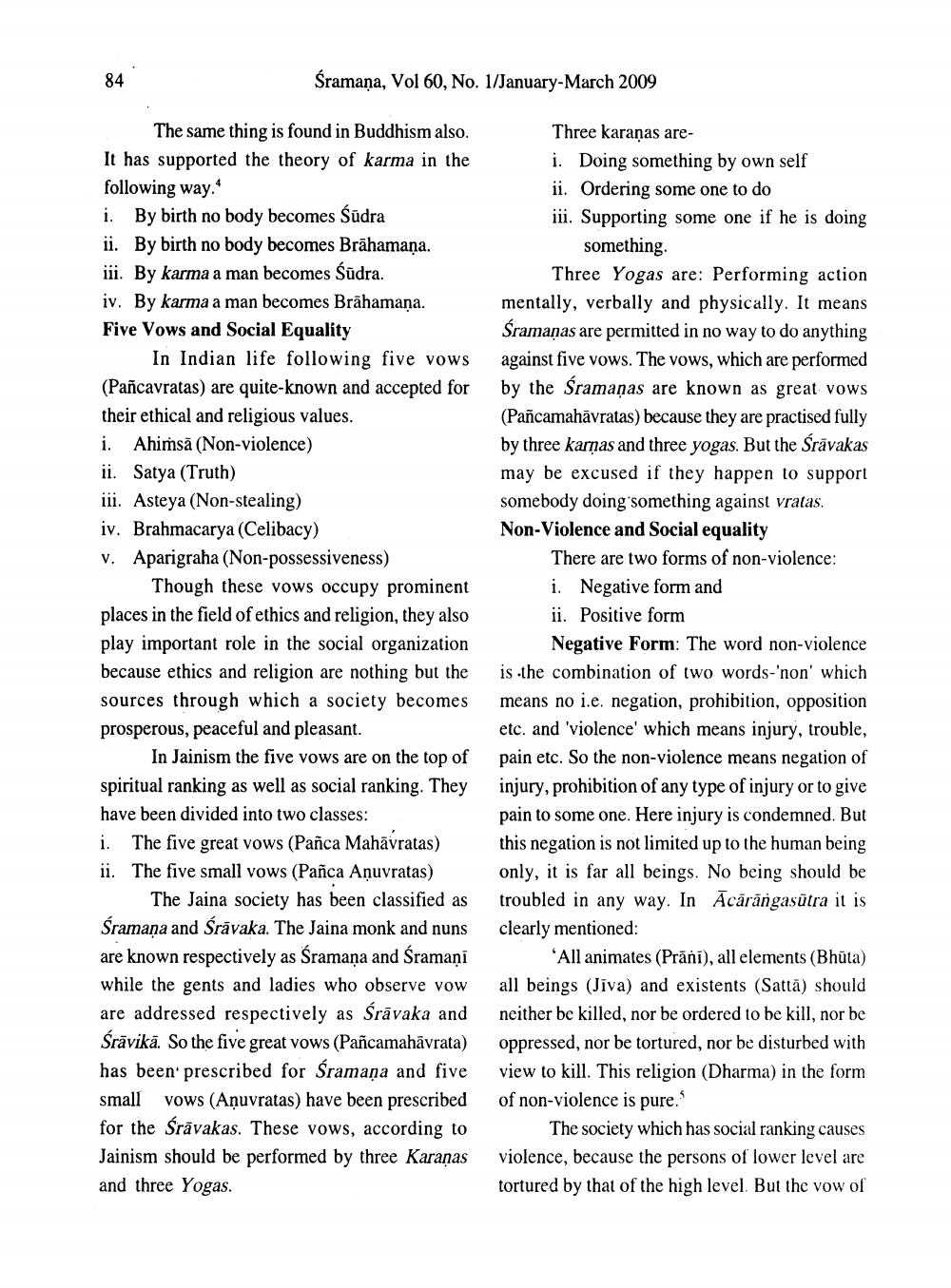________________
Śramaņa, Vol 60, No. 1/January-March 2009
The same thing is found in Buddhism also. It has supported the theory of karma in the following way. i. By birth no body becomes Šūdra ii. By birth no body becomes Brāhamaņa. iii. By karma a man becomes Sūdra. iv. By karma a man becomes Brāhamana. Five Vows and Social Equality
In Indian life following five vows (Pañcavratas) are quite-known and accepted for their ethical and religious values. i. Ahimsā (Non-violence) ii. Satya (Truth) iii. Asteya (Non-stealing) iv. Brahmacarya (Celibacy) v. Aparigraha (Non-possessiveness)
Though these vows occupy prominent places in the field of ethics and religion, they also play important role in the social organization because ethics and religion are nothing but the sources through which a society becomes prosperous, peaceful and pleasant.
In Jainism the five vows are on the top of spiritual ranking as well as social ranking. They have been divided into two classes: i. The five great vows (Panca Mahāvratas) ii. The five small vows (Pañca Aņuvratas)
The Jaina society has been classified as Śramana and Sravaka. The Jaina monk and nuns are known respectively as Śramaņa and sramaņi while the gents and ladies who observe vow are addressed respectively as Śrāvaka and
Śrāvikā. So the five great vows (Pañcamahāvrata) has been prescribed for Sramana and five small vows (Aņuvratas) have been prescribed for the Śrāvakas. These vows, according to Jainism should be performed by three Karanas and three Yogas.
Three karanas arei. Doing something by own self ii. Ordering some one to do iii. Supporting some one if he is doing
something
Three Yogas are: Performing action mentally, verbally and physically. It means Śramaņas are permitted in no way to do anything against five vows. The vows, which are performed by the Sramaņas are known as great vows (Pañcamahāvratas) because they are practised fully by three karņas and three yogas. But the Srävakas may be excused if they happen to support somebody doing something against vratas. Non-Violence and Social equality
There are two forms of non-violence: i. Negative form and ii. Positive form
Negative Form: The word non-violence is the combination of two words-'non' which means no i.e. negation, prohibition, opposition etc. and 'violence' which means injury, trouble, pain etc. So the non-violence means negation of injury, prohibition of any type of injury or to give pain to some one. Here injury is condemned. But this negation is not limited up to the human being only, it is far all beings. No being should be troubled in any way. In Ācārāngasutra it is clearly mentioned:
All animates (Prāni), all elements (Bhuta) all beings (Jiva) and existents (Sattā) should neither be killed, nor be ordered to be kill, nor be oppressed, nor be tortured, nor be disturbed with view to kill. This religion (Dharma) in the form of non-violence is pure.
The society which has social ranking causes violence, because the persons of lower level are tortured by that of the high level. But the vow of




